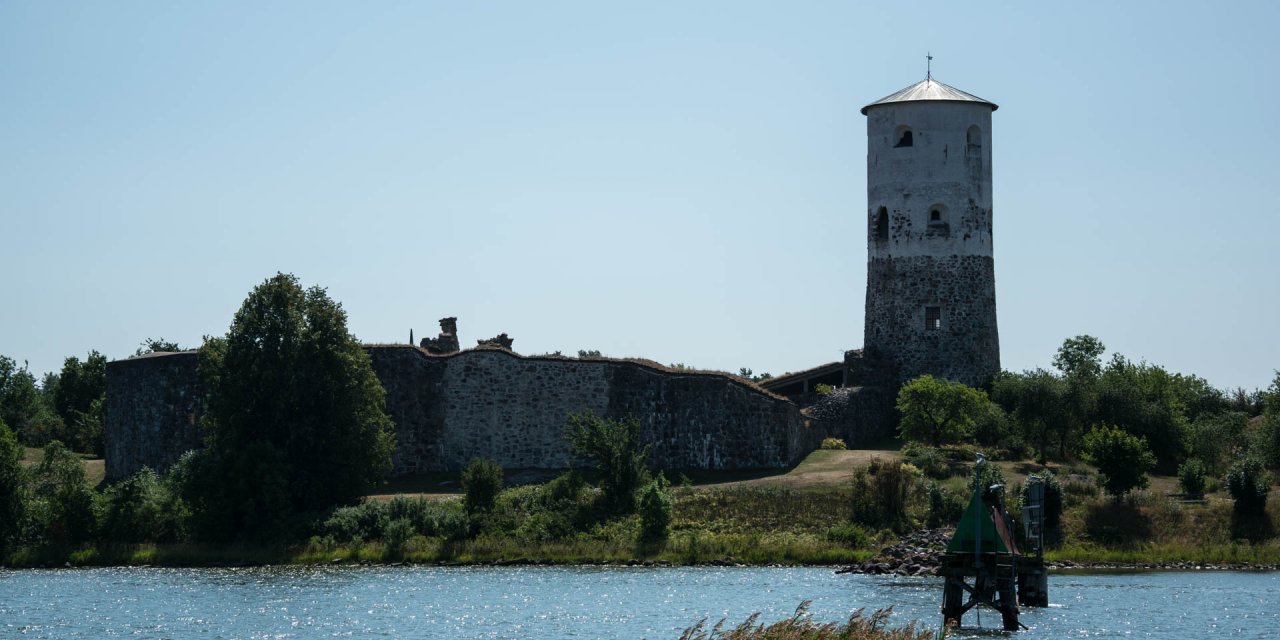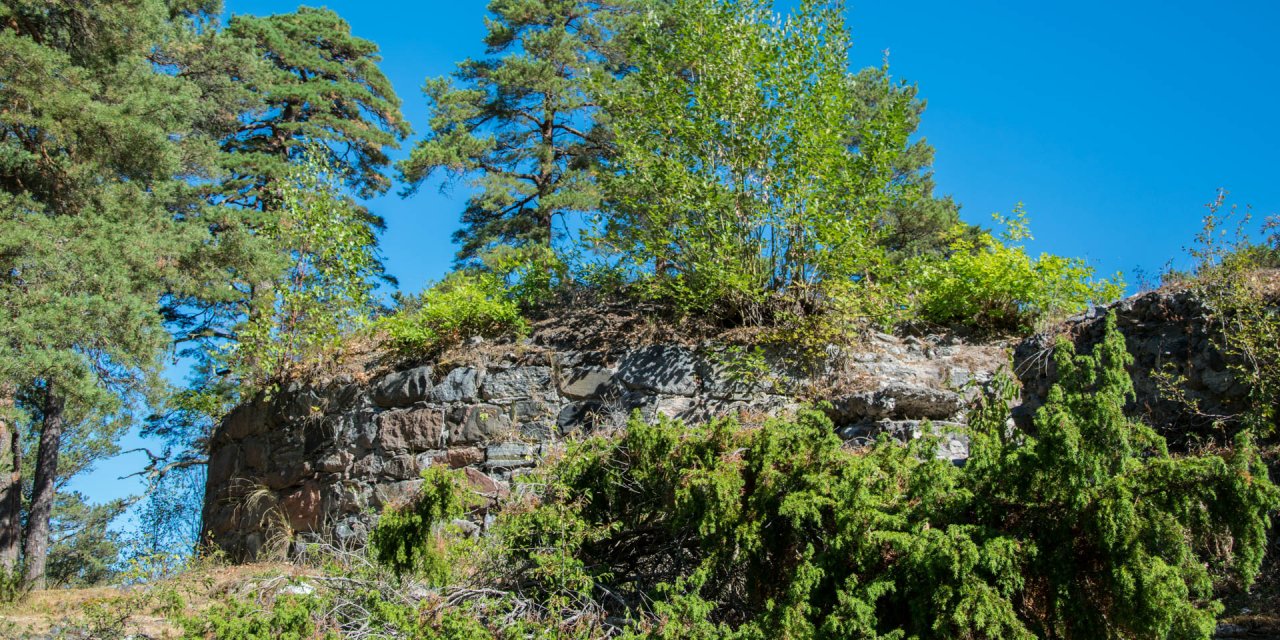

Å Ödekyrka
Medieval church ruin near Å
Å Ödekyrka is the ruin of a 13th century church. It is located about 25 kilometers southeast of Norrköping outside the church village Å at the south side of the peninsula Vikbolandet.
If you approach Å Ödekyrka, you will wonder why the ruins of the ancient church are so far away from the nearest village. However, the ruin, only 300 metres from Slätbaken bay, was never the village church of Å. In the Middle Ages it belonged to the neighbouring royal estate Ring on the shore of the bay.
Directly at the royal estate there was an important port, whose former harbour basin is still recognizable today. In the late Middle Ages, the gravel road leading up from the shore and past the church ruins was an important trade route to Söderköping after the port became unusable due to the uplift of the land.
The ruins of the relatively large church consist of the two completely preserved gable walls, the damaged southern wall and the collapsed masonry of the northern wall. Until 1846, the year in which a new church in Å was consecrated, the old church was the place of worship of the large parish for many centuries.
The demise of the old church in Å
After the old church had been cleared and some of the medieval church treasures, such as a crucifix, the baptismal font, a picture of the Madonna and several epitaphs from the 16th century had found their way into the new church, the old wall was more or less left to its fate. Perhaps the medieval building would still be preserved today if a fire in 1878 had not sealed its doom.
The cause was a young, somewhat dreamy farmhand who had raked leaves nearby and burned them. When extinguishing the burnt pile of leaves, he first missed that the surrounding grass had caught fire and spread towards the church. When he finally noticed it, it was already too late for the church and it burned down to the ground. It then took almost 100 years to rediscover the charm of the ruins and finally, in 1973, the old walls were secured and the ruins were preserved.
Curious facts about the history of the church
At the church some of the old graves of the former cemetery are still preserved. There is a commemorative plaque for the shoemaker Jon Andersson, who is buried there and allegedly became 147 years old. According to the information on the plaque, he was born in 1582 at the farm Kåverö and died in 1729 in a poorhouse. If the information is true, he would have been the oldest person in the world - and his biblical age is not only mentioned on this plaque, but is also found in numerous historical documents and records.
Another memorable event in connection with the church is the winged altar, which has been proven to be true. The valuable object, a North German work from the Middle Ages, was actually intended for the new church in Å. Instead, the local priest illegally sold the art treasure to a sculptor for 75 crowns. The latter tried to sell the winged altar in Cologne, but failed. Back again, the historical museum bought the ecclesiastical art treasure, which is today exhibited in Östergötlands Museum in Linköping.



